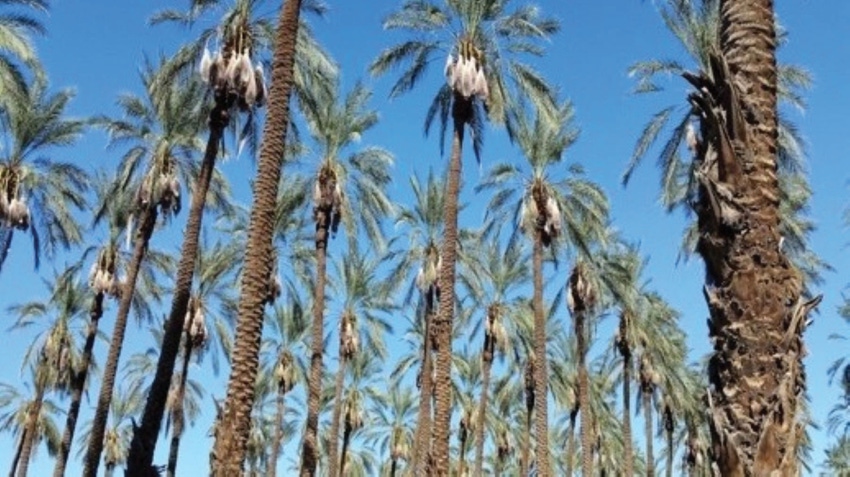
So the holiday table is set with its main meal offerings joined by many of the most popular adjunct dishes. On one end are some of the snack platters laden with things from the West Coast tree nut category, like walnuts, chocolate almonds, salted pistachios, maybe even a hazelnut or two for variety.
On the other end are culinary companions of the tree nut crowd, tree crops dating back some 5,000 years, the most significant of which is the medjool date where growers also recently wrapped up their 2023 harvest.
It may be a stretch for hard-shell tree nut purists to lump dates in with tree nuts. Scientifically, medjool dates are a fruit -- the oldest cultivated one, with origins in the Middle East and North Africa regions, according to the Arizona-based Dateland Date Gardens. Nature enthusiast Anita Miles of branchthetree.com acknowledges as much, but writes: “Dates are considered a tree nut because they come from a tree and they have a hard shell that covers the edible seed inside."
One of the most popular versions is a cold-hardy variety known as the medjool date palm that grows well from California through Arizona, Nevada, New Mexico, and Texas on through Florida. Because these trees have some preferences in where they like to set up residency, Imperial County’s Bard Valley is a popular spot located at the intersection of Arizona, California and Mexico, just outside of Yuma.
Medjools are similar to other tree types in that they need their sunshine and nutrients as well as some hands-on TLC before they reach harvest time in early Fall. Patience is another needed quality as it takes six years for a fledgling shoot, growing about a foot a year, to reach production maturity.
And you can’t just walk away once they’re rooted as date palms need to be tended throughout the year. Thorn removal and thinning is done early, prior to hand-pollination once the flower on the tree blooms. Ripening gets underway in late July at the peak of Yuma sunshine. There’s a fruit-thinning process to allow dates to grow larger while they nestle in protective bags to keep predators away. Harvest by skilled palmetto harvesters is generally in a short window in the August-September time frame.
Bard Valley
In Bard Valley, a small group of growers make up the Bard Valley Medjool Date Growers Association that supplies upwards of 60% of that variety of the Fruit of Kings in the U.S. Orchards began to appear on these date plantations in the mid-1900s with each of the original trees that remain still producing some 200 pounds of dates annually.
At the end of this year’s harvest, The Produce News noted, “Reports from the field paint a positive picture with indications of a good-quality crop.” Quoting one producer, SunDate, “It will be a good year on both varieties, Medjool and deglet noor,” and both crops are now on store shelves.
The popularity of the Medjool continues to rise with dates now a year-round item rather than just a seasonal treat. “The days of dates only being here from Thanksgiving until Easter are long gone --- they’re now a 365-day commodity,” according to SunDate personnel who export 40% of their volume.
[Note: This article has been updated to clarify that medjool dates are a type of fruit.]
About the Author(s)
You May Also Like




